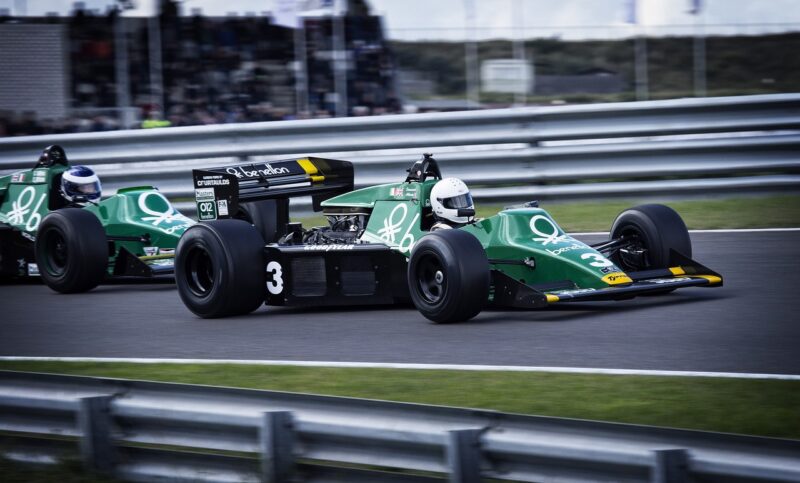How Formula 1 Engineering Is Inspiring Everyday Car Tech
November 10, 2024

Formula 1 racing is not just a sport; it is a showcase of some of the most advanced engineering techniques and technology known to man. The innovations found on the Formula 1 track often trickle down into everyday vehicles, influencing how we drive and interact with our cars. As the fastest motorsport in the world, Formula 1 serves as a testing ground for cutting-edge technologies that could revolutionize the automobile industry. In this article, we’ll delve into how the realm of Formula 1 engineering is inspiring everyday car technology and shaping the future of personal transportation.
1. The Power of Lightweight Materials
One of the significant areas where Formula 1 has had a profound impact is in the use of lightweight materials. The quest for speed often leads to drastic weight reduction, compelling F1 teams to use innovative materials like carbon fiber, titanium, and aluminum alloys.
These materials are not only incredibly light but also exceptionally strong, providing the structural integrity needed to withstand the rigors of high-speed racing. As a result, car manufacturers are increasingly utilizing similar materials in consumer vehicles to enhance performance while improving fuel efficiency.
For instance, advanced composites made from carbon fibers are now being employed in high-end sports cars and luxury vehicles, enabling them to achieve significantly better power-to-weight ratios compared to their predecessors.
2. Aerodynamic Enhancements
Aerodynamics is another crucial aspect where Formula 1 engineering shines. The focus on reducing drag and increasing downforce has resulted in cars that can maintain higher speeds while conserving energy. Technologies originally developed for F1 cars are now influencing the automotive sector with features such as active aerodynamics.
For example, contemporary road cars increasingly feature movable aerodynamic elements that adjust based on speed and driving conditions. This includes adjustable spoilers, diffusers, and even air intakes that help optimize performance in real-time.
Not only do these improvements lead to better handling and speed, but they also enhance fuel efficiency, showcasing how race-inspired aerodynamics is becoming a key consideration for everyday automobiles.
3. Electrification and Hybrid Technology
As the automotive industry shifts towards sustainability, F1’s move to hybrid technology has been a pivotal influence. Many F1 teams employ hybrid power units that combine traditional internal combustion engines with electric motors to achieve unrivaled efficiency and power.
This pioneering hybrid technology influences the development of electric vehicles (EVs) and hybrid cars for consumers. The technology that allows an F1 car to recover energy during braking—known as KERS (Kinetic Energy Recovery System)—is increasingly seen in road cars.
Modern models, particularly from luxury brands, are equipped with similar regenerative braking systems that recharge their batteries, further improving the efficiency of everyday vehicles while ensuring drivers can still experience thrilling acceleration.
4. Advanced Telemetry and Connectivity
Telemetry technology allows F1 teams to gather real-time data from their cars while racing, aiding in decisions that can affect performance. This wealth of information includes parameters like tire temperature, fuel levels, and engine performance metrics, analyzed instantly to react to dynamic racing conditions.
In the consumer automotive sector, similar technology is being integrated to enhance driving experiences. Modern vehicles come equipped with sophisticated onboard diagnostics that provide real-time performance data and alerts directly to the driver’s dashboard or smartphone.
Furthermore, advanced telematics systems have been developed that can even predict maintenance needs, and suggest actions based on driving behaviors—techniques borrowed directly from the motorsport arena.
5. Enhanced Safety Features
Safety is paramount in both Formula 1 and everyday driving. Formula 1 engineers consistently develop innovative safety features, resulting in improved structures to withstand impacts, advanced fire-retardant materials, and rigorous crash tests.
The advancements in F1 have trickled down into standard vehicles, where technologies like multi-stage airbags, traction control systems, and advanced driver assistance systems (ADAS) have become commonplace.
Features such as lane departure warnings and automatic emergency braking systems directly mirror the rigorous safety developments in F1. As these systems evolve in the motorsport world, it ensures that everyday cars continue to improve in safety standards and performance.
6. Performance Measurement and Driver Feedback
In F1, driver feedback is crucial for car adjustments and tuning. The use of simulators and telemetry data allows the engineering team to refine car dynamics based on drivers’ preferences. This focus on performance measurement is leading car manufacturers to adopt similar approaches for consumer vehicles.
Today’s sports car brands are integrating sophisticated feedback loops within their setups, allowing drivers to analyze and share their performance metrics with manufacturers for ongoing improvements. As technology advances, performance tracking applications can also provide insights into driving styles, helping drivers hone their abilities and ensure they are operating their vehicles at peak performance.
Conclusion
The relationship between Formula 1 engineering and everyday car technology is an exhilarating glimpse into the future of mobility. As advancements in lightweight materials, aerodynamics, electrification, and safety continue to evolve on the racetrack, they pave the way for innovations in our everyday vehicles. As enthusiasts and everyday drivers alike benefit from the lessons learned on the track, the boundaries of what is achievable in automotive technology are being consistently pushed forward. The inspiration drawn from the thrill of motorsport not only enhances our daily commutes but also ignites excitement about what lies ahead in the world of automobile engineering.
Explore your passion for cars and racing further—who knows? The next major breakthrough in car technology could be born out of the high-octane world of Formula 1 racing, directly influencing how we experience transportation in our everyday lives.







